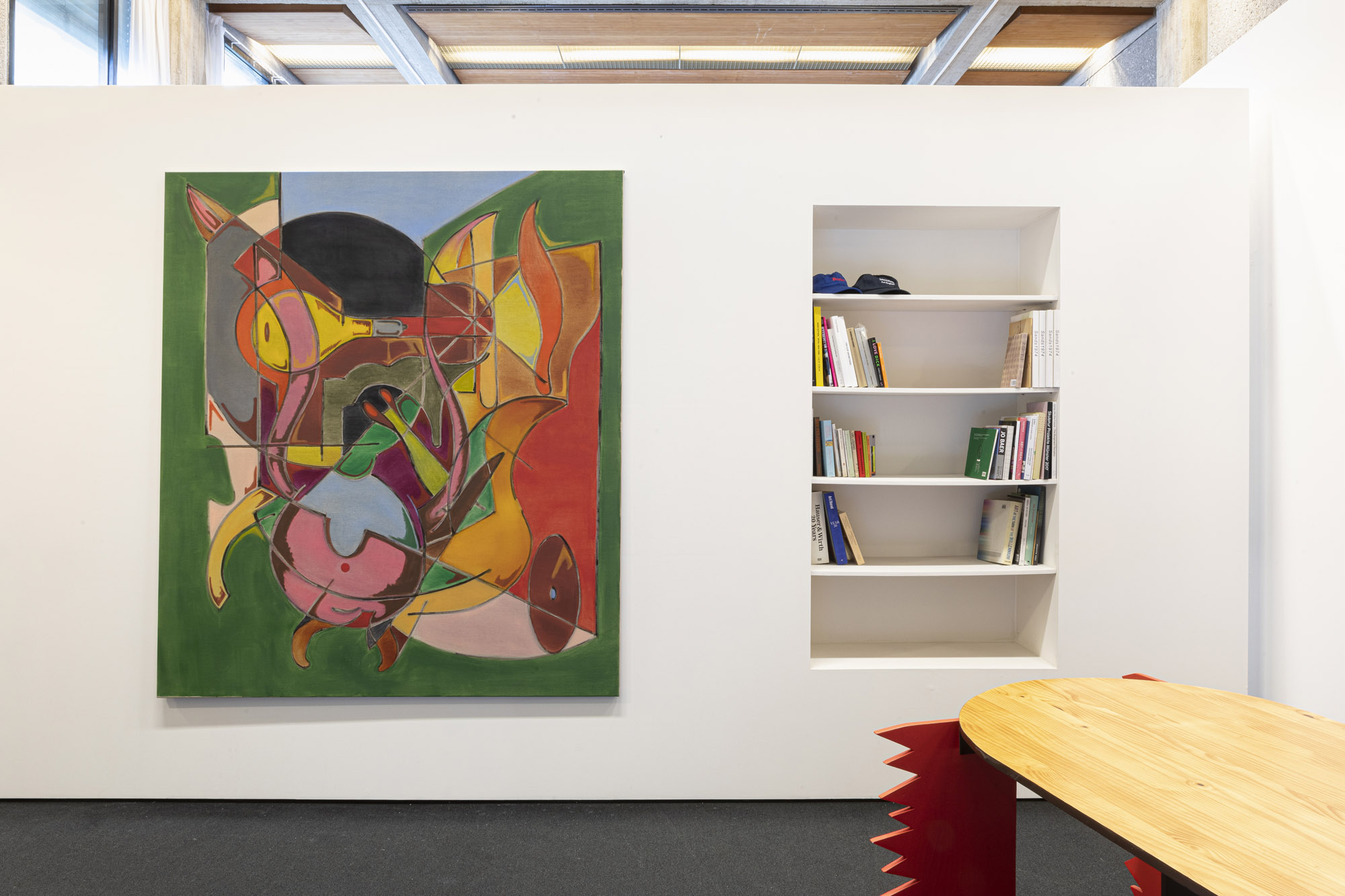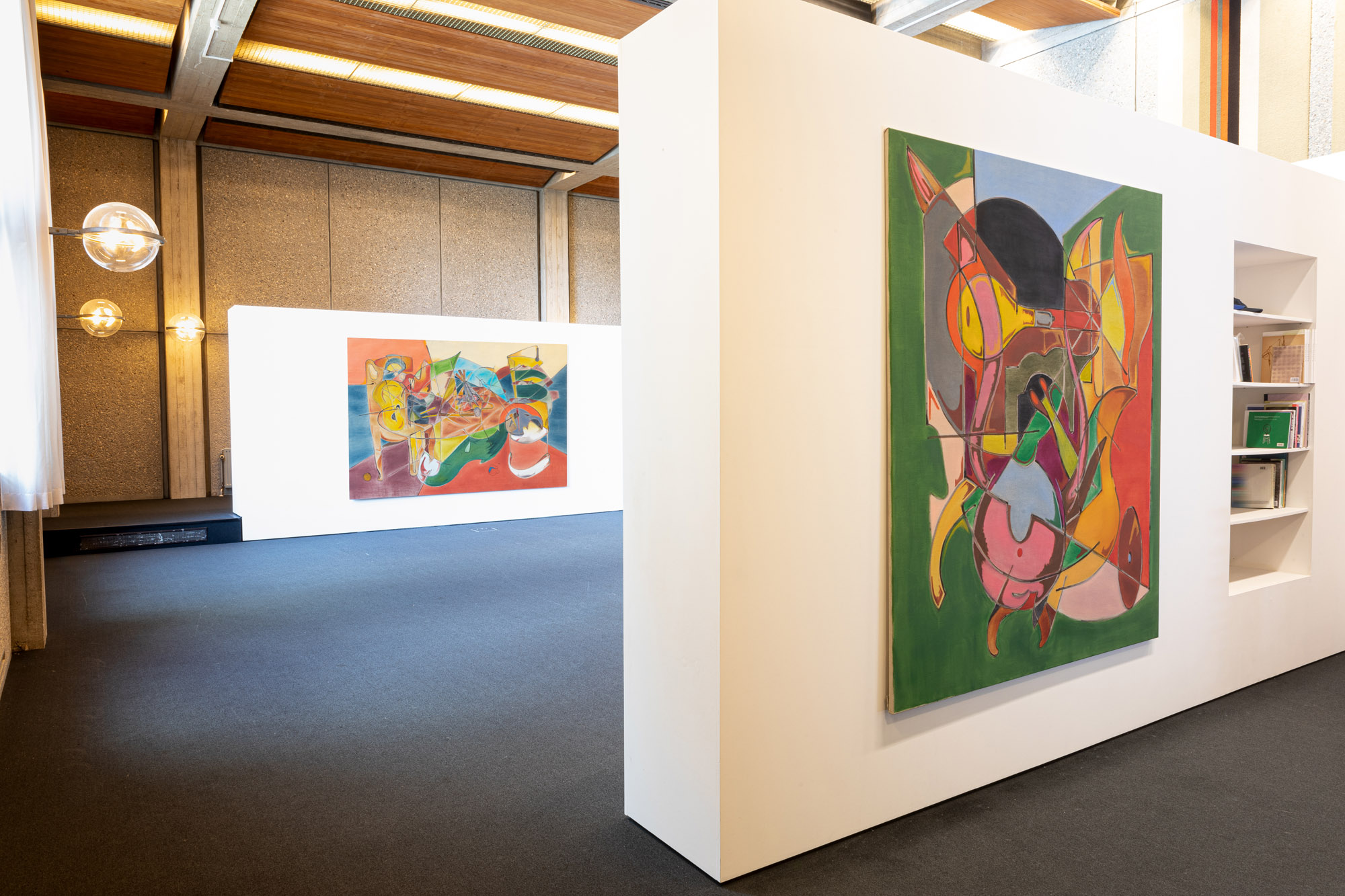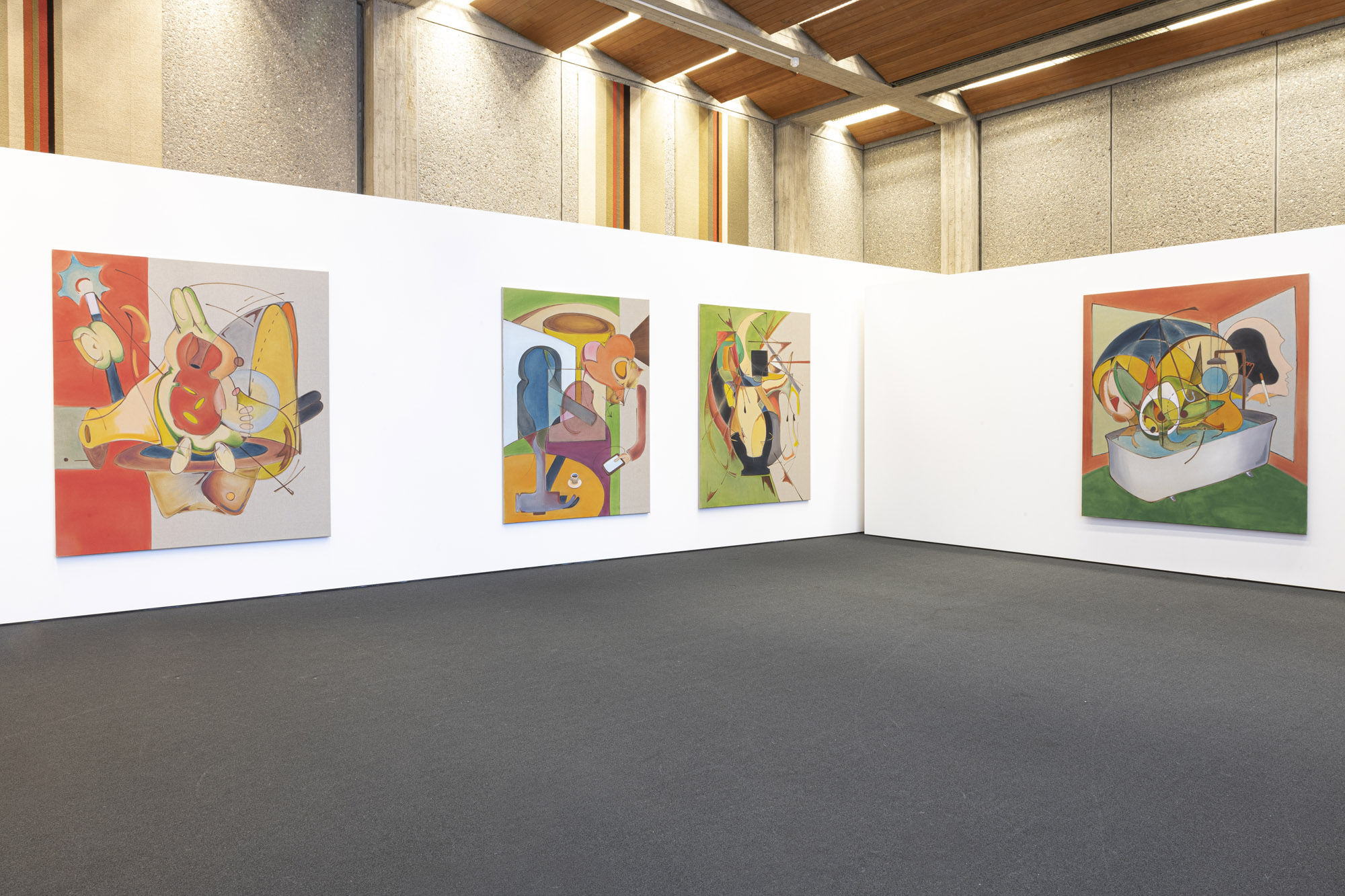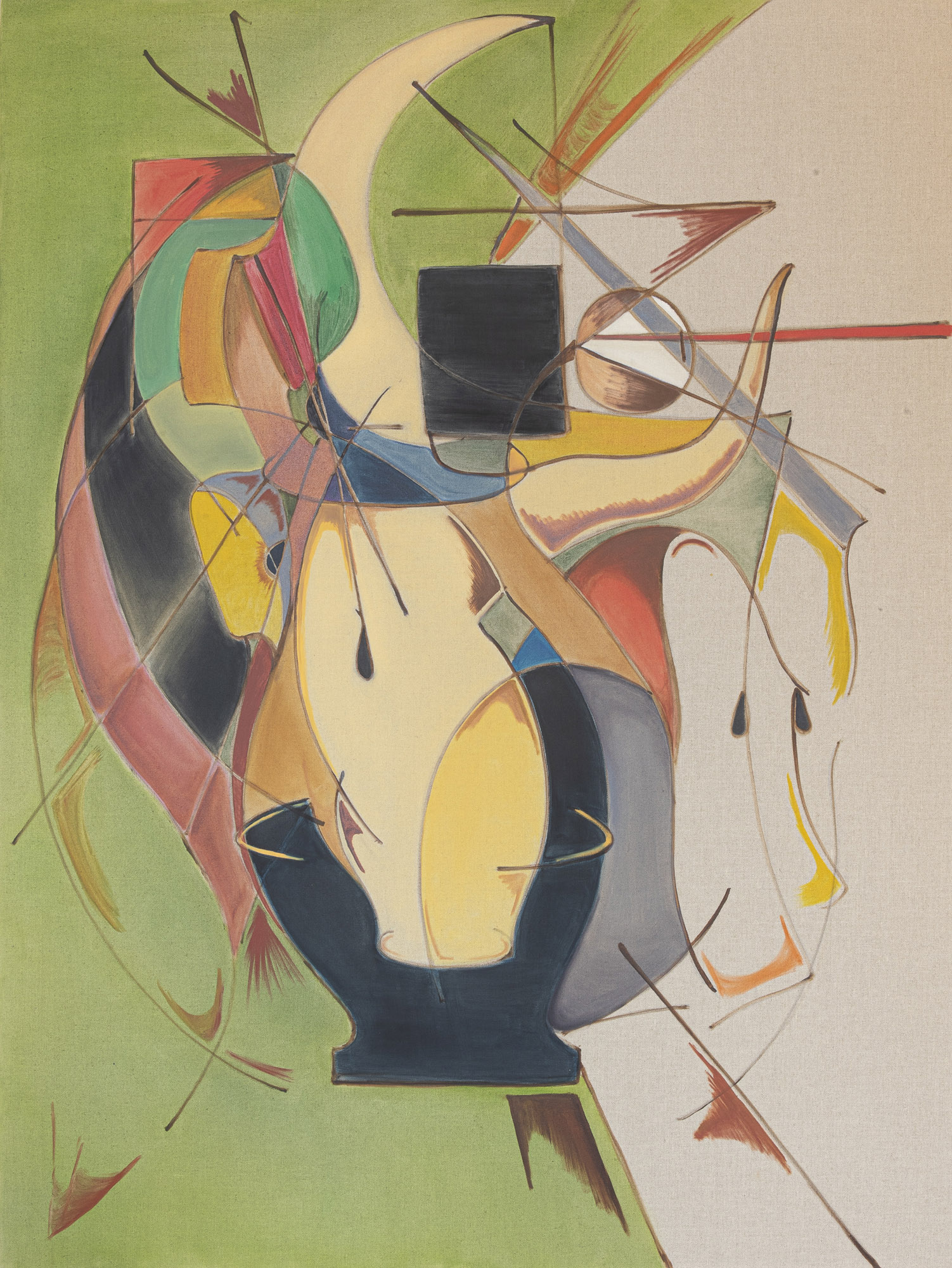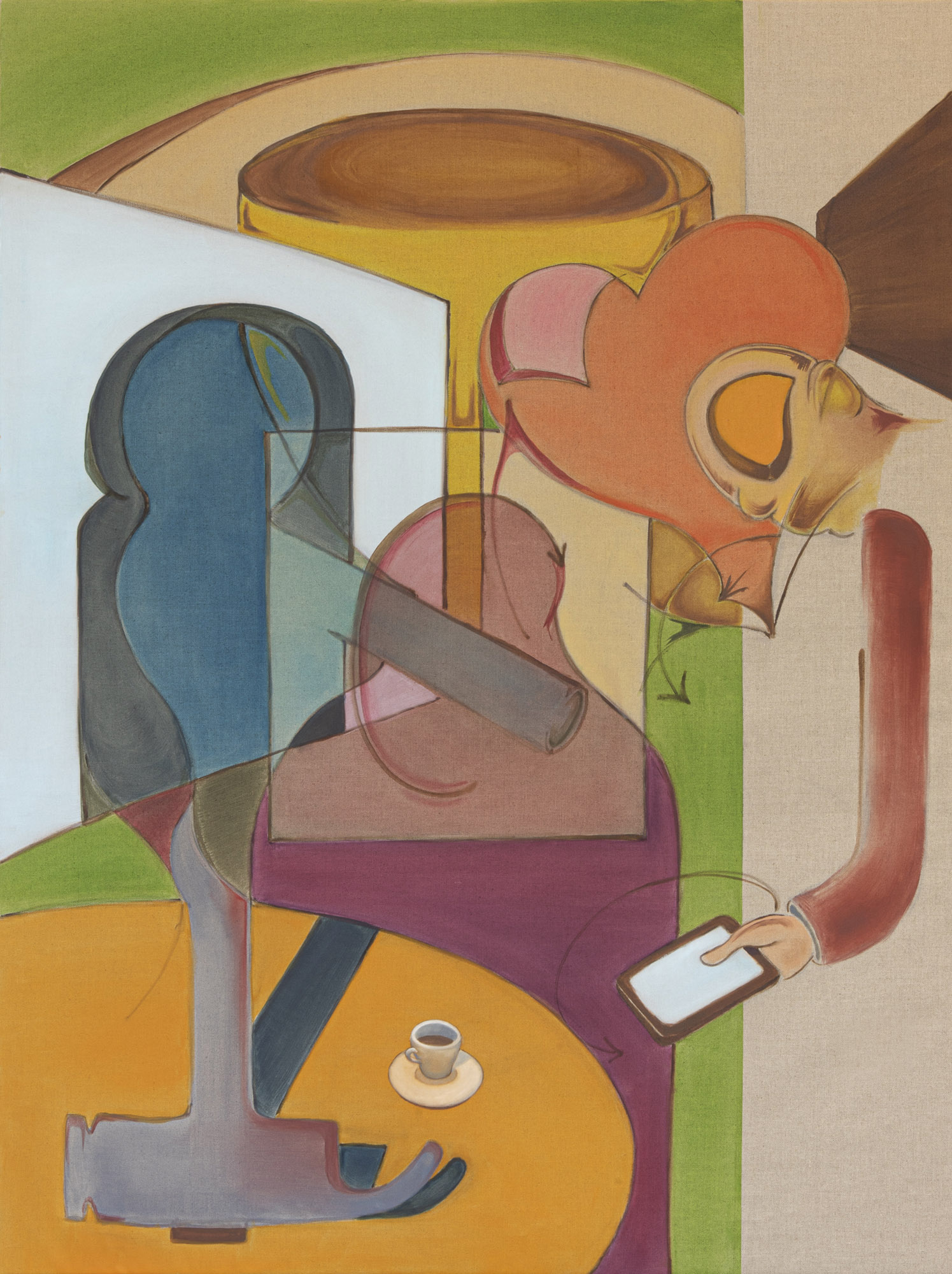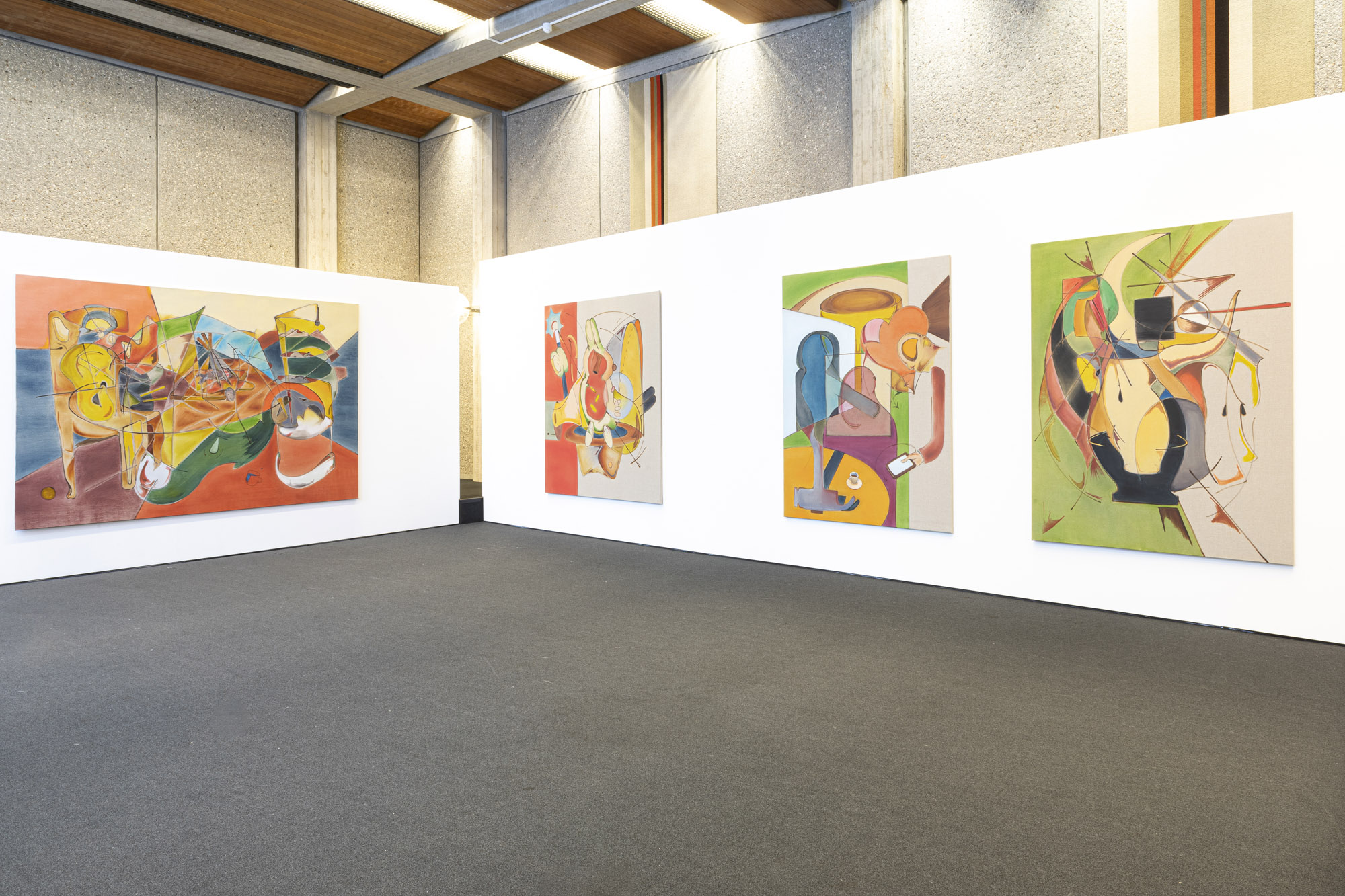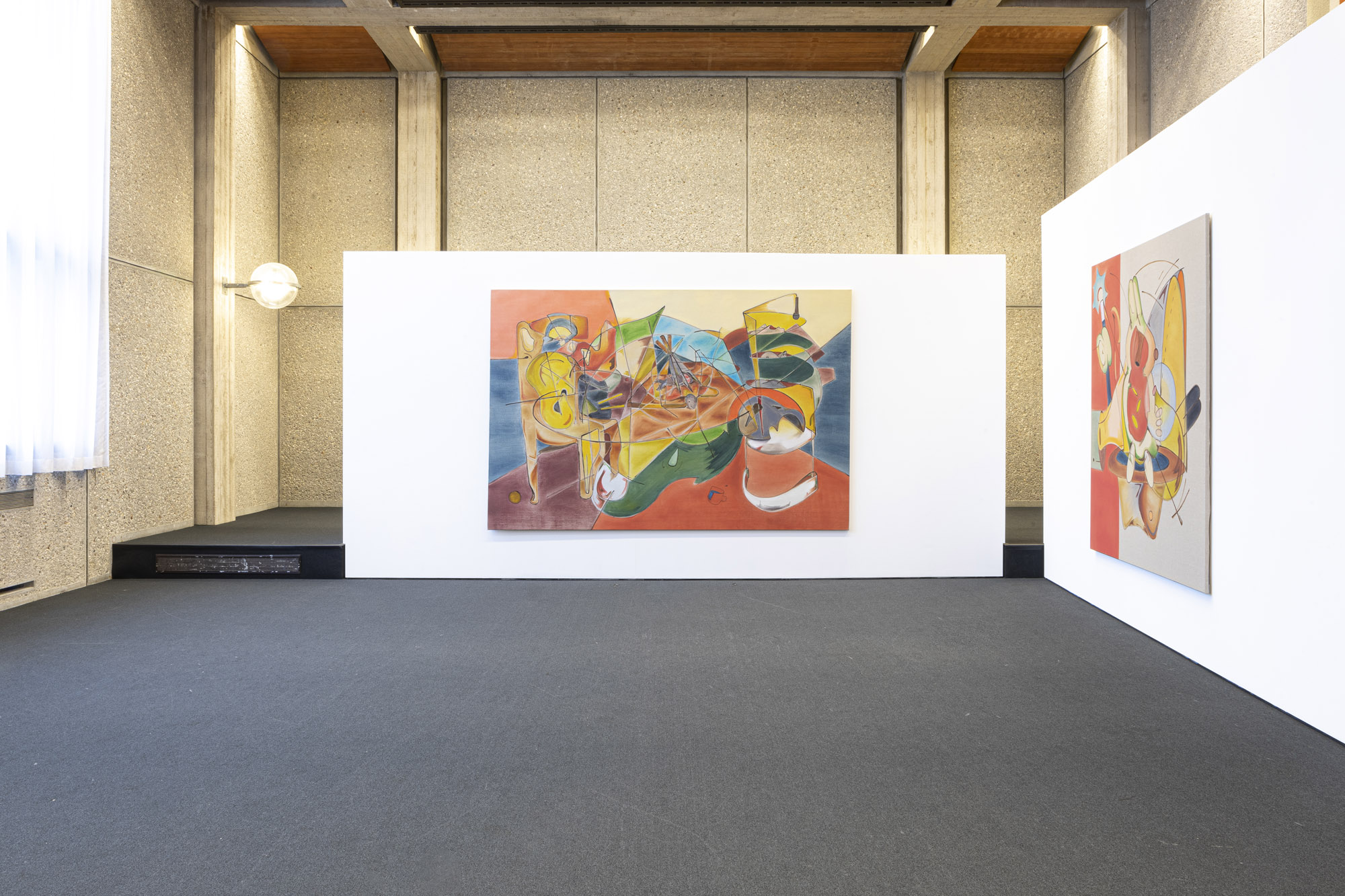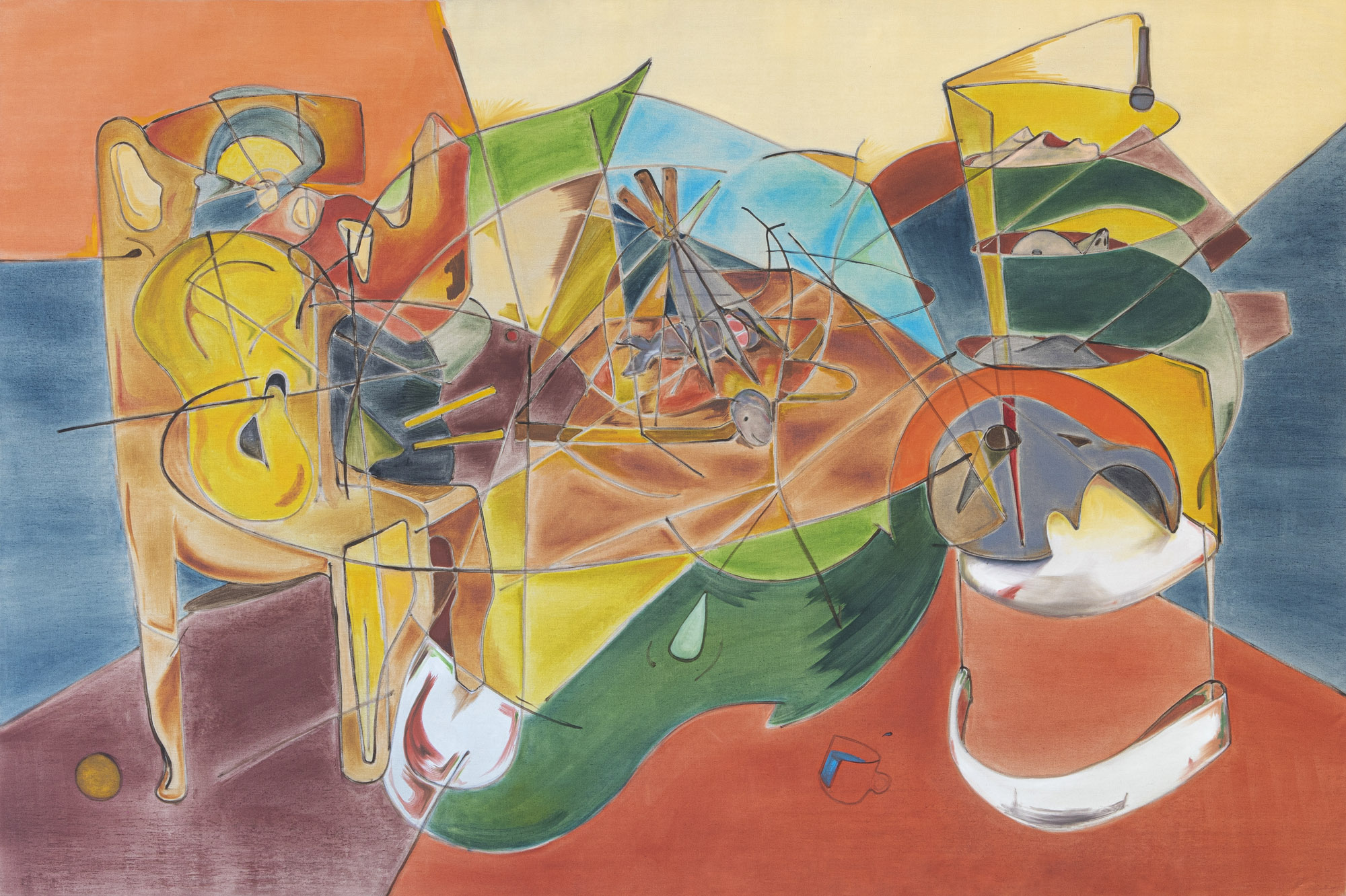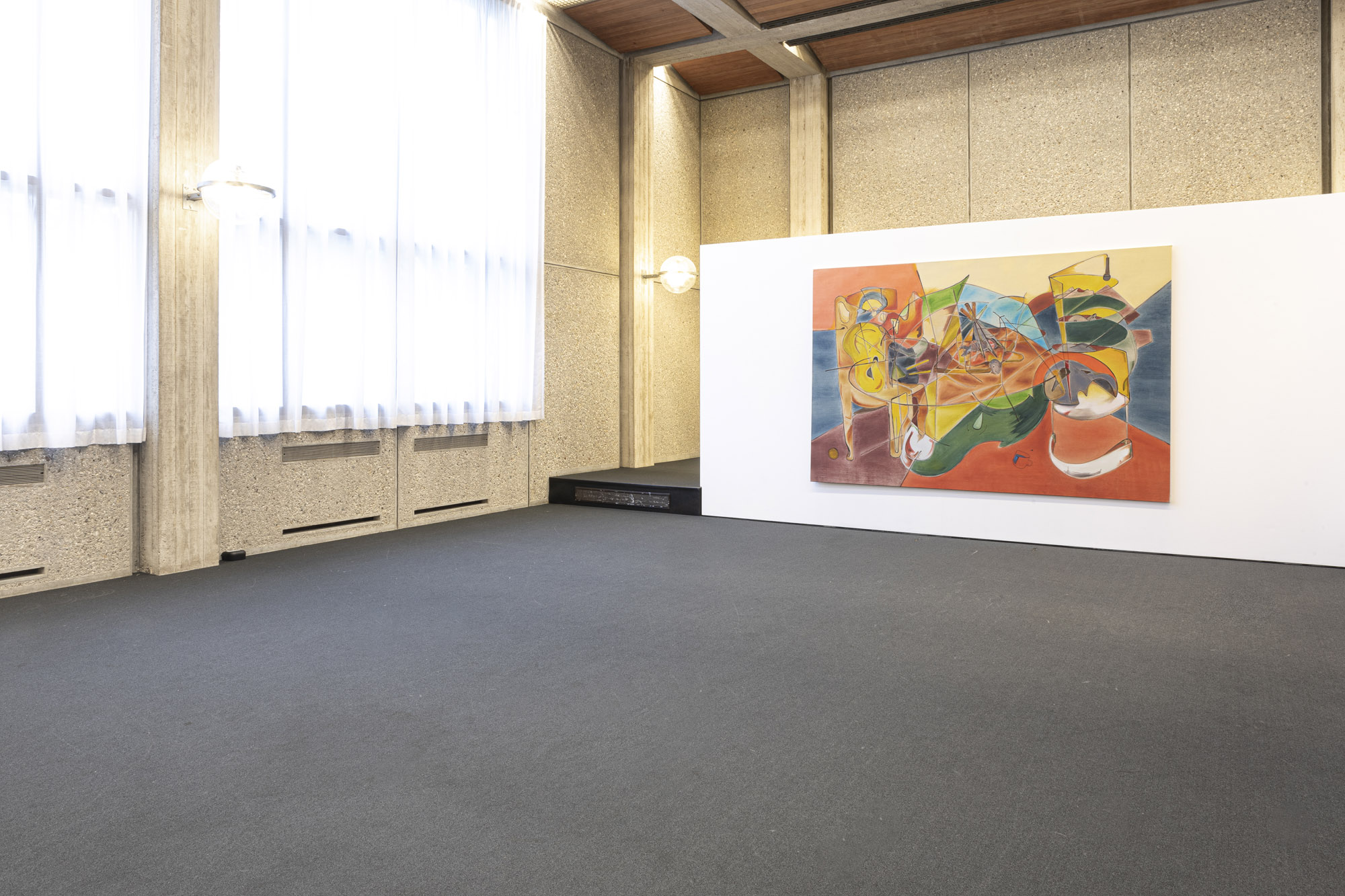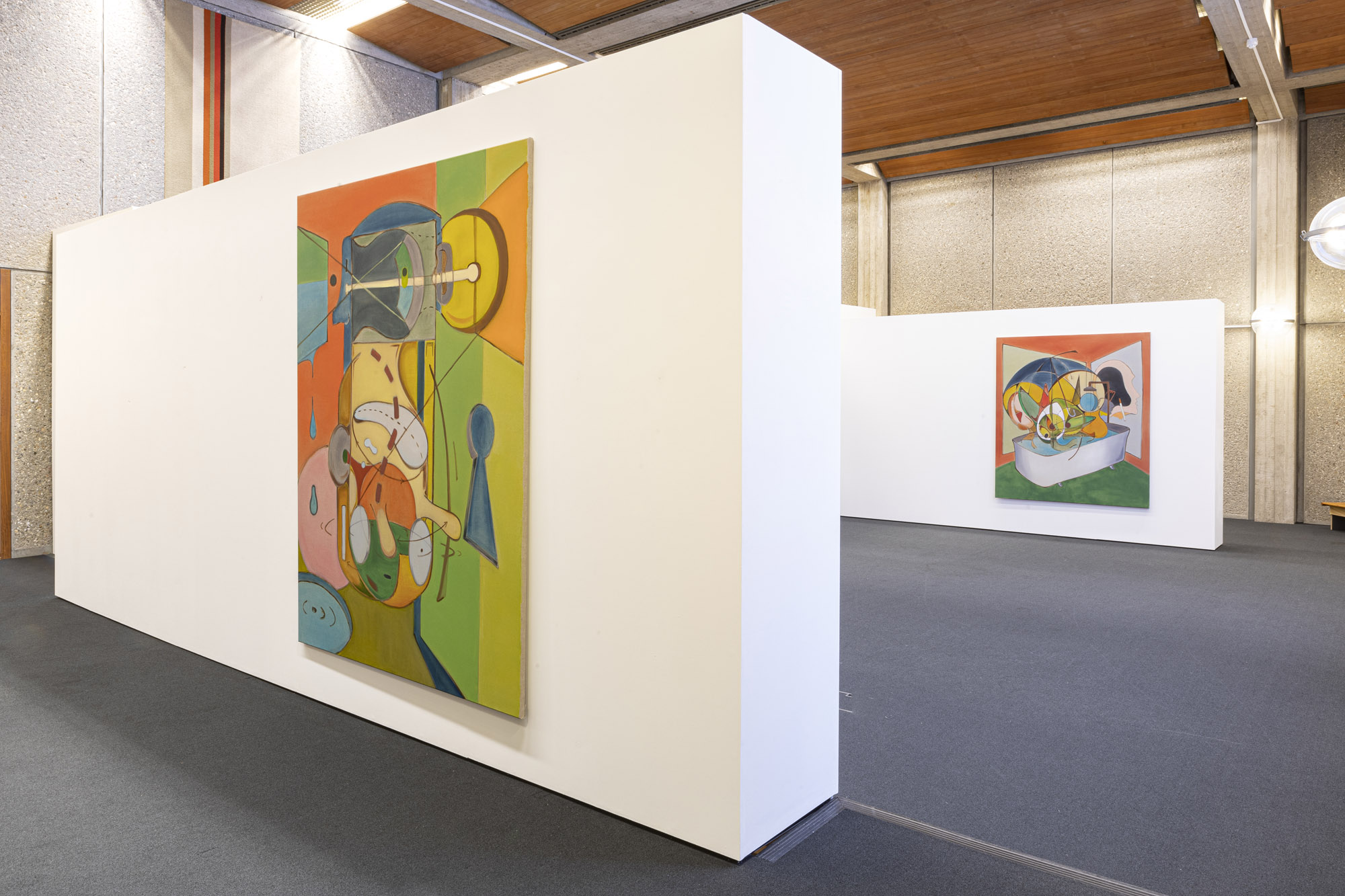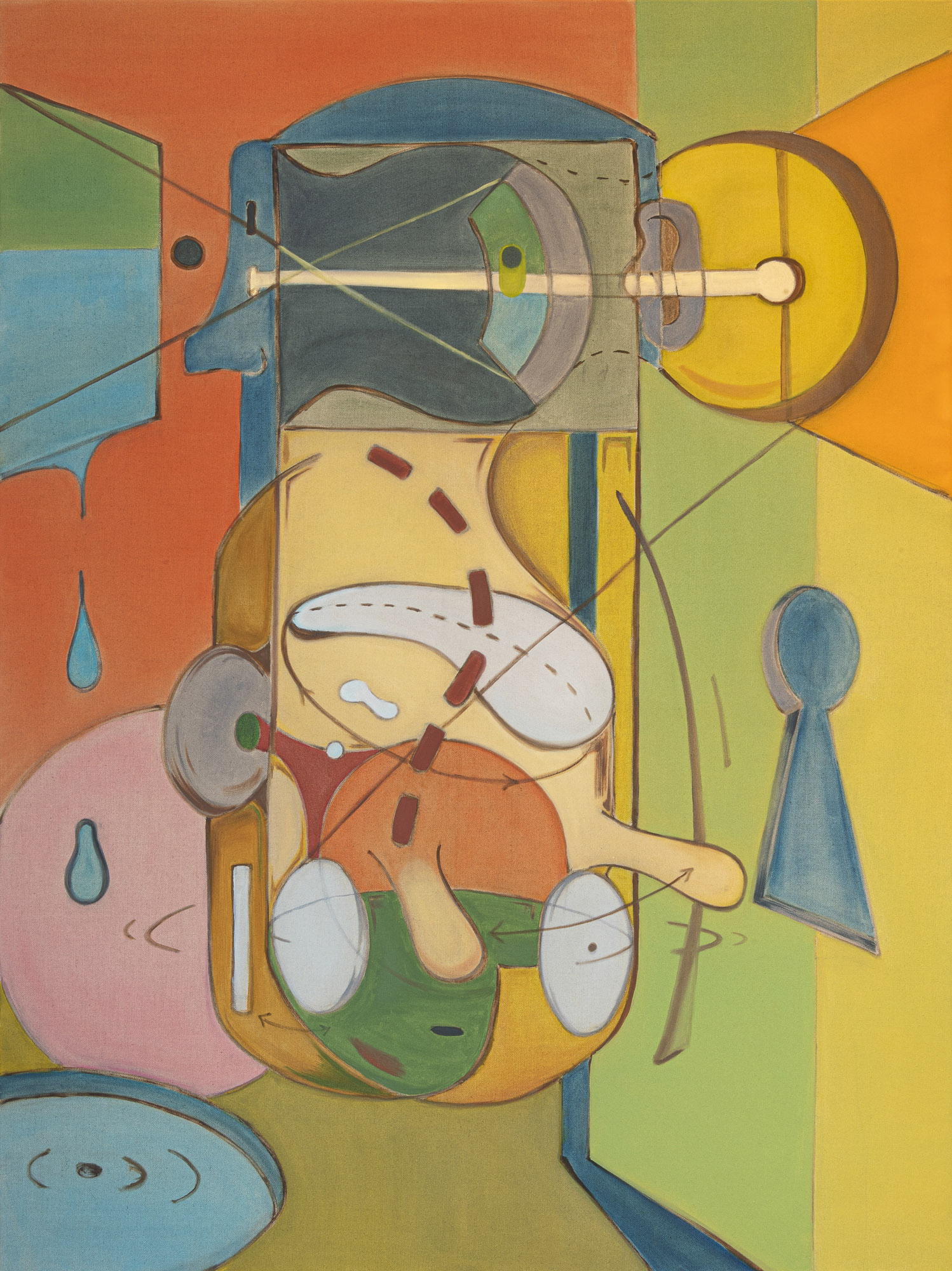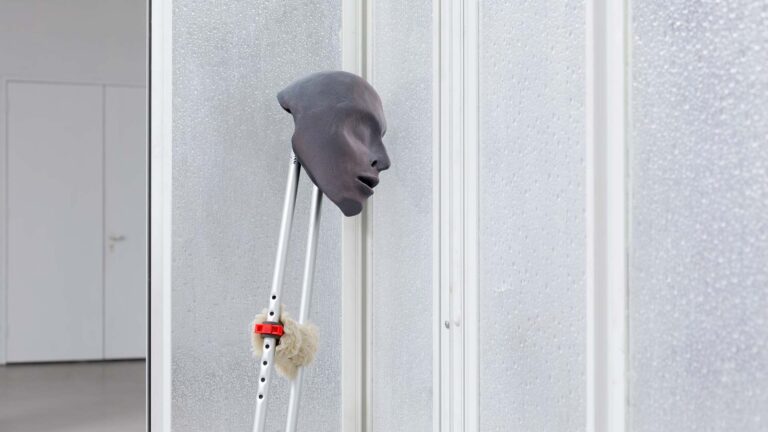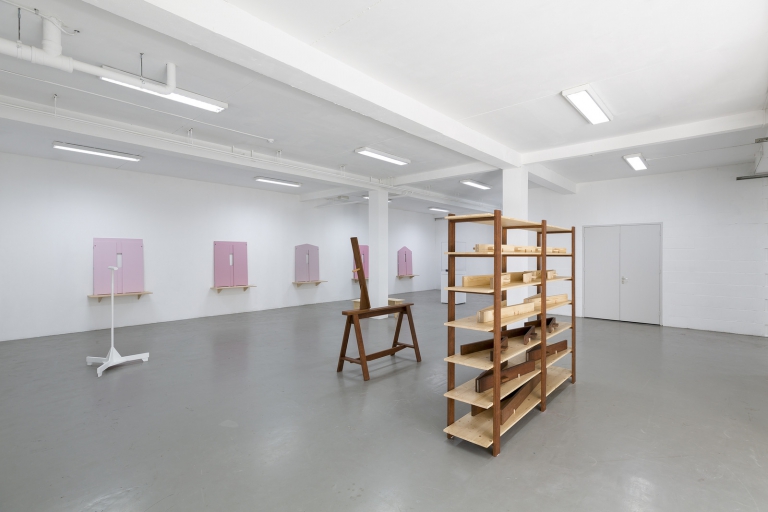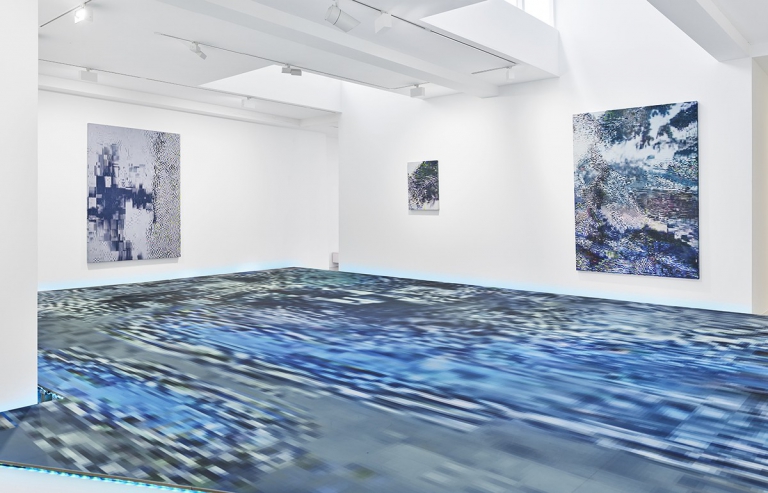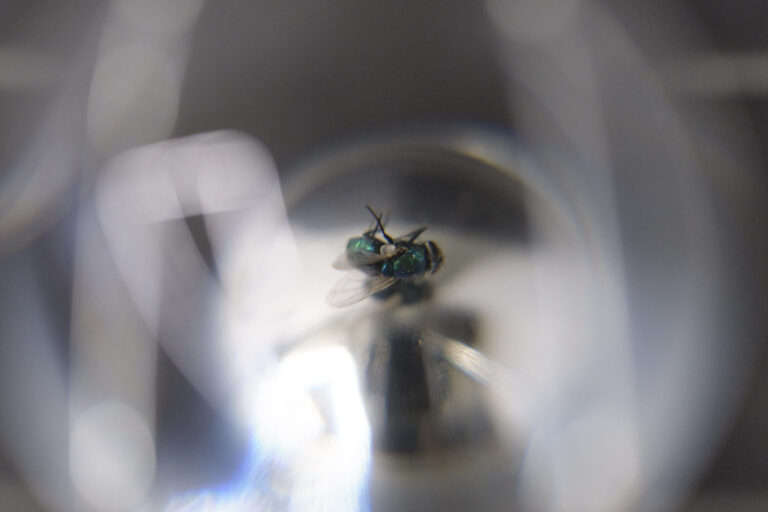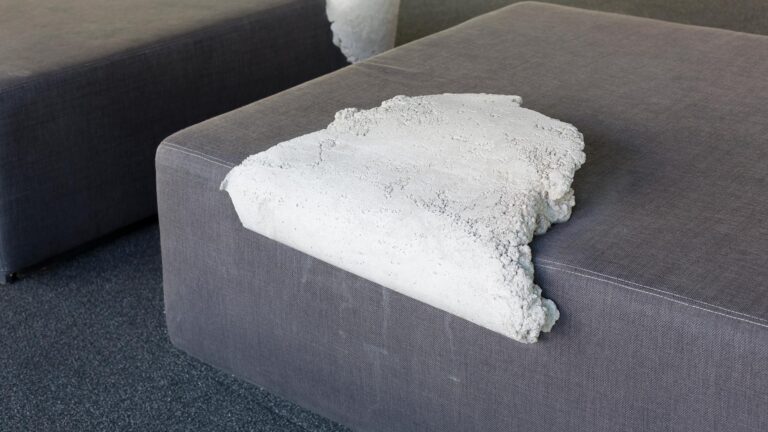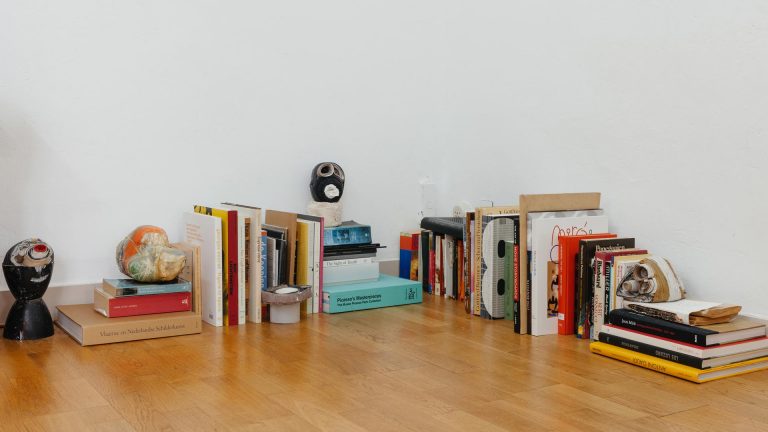Artist: Rasoul Ashtary
Exhibition title: a circle with several centers
Venue: diez, Amsterdam, The Netherlands
Date: September 9 – October 9, 2022
Photography: all images copyright and courtesy of the artist and diez, Amsterdam
During our initial conversation, Rasoul Ashtary made note of the moment when critic Stanisław Przybyszewski cast his eyes on Edvard Munch’s image of a man and woman caught in an embrace, the latter figure apparently puncturing the former’s neck. Referring to the composition as Vampire, Przybyszewski held that the swirling transmission of energy between the subjects corresponds to the way blood circulates in the body. Munch denied the vampiric subject matter, instead contending that this scene is “just a woman kissing a man on the neck,” correcting the title as Love and Pain.
Munch’s tragicomic situation demonstrates the oscillatory exchange between artist and viewer at the behest of the art-object. The painting becomes a machine, bringing the viewer into its world and producing another thing outside of the intention of the painter. In this situation, autonomy is constantly changing hands. The mobility of meaning sparked a particular shift in Ashtary’s process – implementing this framework of conflict and exchange. Robert Ashley’s experimental soundscapes are also crucial to the development of this new work. Ashley similarly employs call and response techniques within his sonic environs, the sudden alternations of silence and noise antagonize mellifluous logic.
Ashtary has consistently referenced psychomatism as a model, working to find the connective tissue between body and mind. Art becomes a mode in which the viewer and artist alike subject themselves to an exploration of supposedly disparate bodily functions, seeking points of relation between physicality, sexuality, and the psyche. The artwork acts as the vessel
for such exploration. In Narcissus reversed: I hate the solid image my reflection forms in mirror; it’s too heavy that I’m afraid mirror implodes (proposal for a mise-en-scène) a heart is disrupted by an arrow’s tip and a pinkish v-shape which mimics the form of a wishbone. A man investigates his phone, his mind dissolving into the heart’s core. The signs and signifiers here remain obscured, suggestions of narrative through lines appearing and disappearing at once.
In describing the mechanisms of his subjects, Ashtary breaks down movement into images. He carefully observes the ways in which his body exhausts and dissolves itself into the work. Vanishing Point is a diagram of the digestive process. This scientific image demonstrates how an event takes place rather than applying pathos to a figure within an illustrative scene. Men are lunatics in desert alternately sees a magician’s hand pulling a rabbit from a hat. This has the architecture of a scene, but the style of map. Solid and dotted lines shatter formal logics without landing on any apparent conclusions. Each work on view avoids the emphasis on emotional perspectives, rather, employing a neutral way of making images via color application and flattened compositional fields.
The vibrant colors and mechanical aspects draw reference from cartoons and animations and he endeavors to capture cycles of movement, forever suspending modes of action. This echoes the precedent of photographer Eadweard Muybridge who took to studying and capturing the way his subjects moved. The instant in which something is in process of becoming or transforming is the point of inquiry Ashtary concerns himself with. The painting medium inherently frames individual moments, psychologically amplified by the decision to immobilize the scene with applied pigments.
It’s well established that the viewer is consigned to Ashtary’s universe. Quotidian and cinematic elements are deconstructed and then reconstituted within his lexicon. This mimics psychoanalytic practice, where knots and behaviors can be broken down into moments then combined again into matter ripe for interpretation. Things inherently become lost in this process, Ashtray welcomes the subsequent formulations. These are almost-systematics, restrained by lack of clarity. Without a clearly delineated path to follow, one is left with demonstrations of motion and allusions to reality. A performance of almosts and what-ifs ignited by interpretive gestures and suggested avenues.
-Text by reilly davidson
Rasoul Ashtary, a circle with several centers, 2022, exhibition view, diez, Amsterdam
Rasoul Ashtary, What Needles Point, 2022, Oil on linen, 200 x 175 cm, 78.7 x 68.9 in
Rasoul Ashtary, a circle with several centers, 2022, exhibition view, diez, Amsterdam
Rasoul Ashtary, a circle with several centers, 2022, exhibition view, diez, Amsterdam
Rasoul Ashtary, Baby is taking shower (After L), 2022, Oil on linen, 200 x 175 cm, 78.7 x 68.9 in
Rasoul Ashtary, Untitled (An urge to become a tool), 2022, Oil on linen, 200 x 150 cm, 78.7 x 59 in
Rasoul Ashtary, Narcissus reversed: I hate the solid image my reflection forms in mirror; it’s too heavy that I’m afraid mirror implodes (proposal for a mise-en-scène), 2022, Oil on linen, 200 x 150 cm, 78.7 x 59 in
Rasoul Ashtary, a circle with several centers, 2022, exhibition view, diez, Amsterdam
Rasoul Ashtary, a circle with several centers, 2022, exhibition view, diez, Amsterdam
Rasoul Ashtary, Men are lunatics in desert, 2022, Oil on linen, 200 x 175 cm, 78.7 x 68.9 in
Rasoul Ashtary, a circle with several centers, 2022, exhibition view, diez, Amsterdam
Rasoul Ashtary, Interview, 2022, Oil on linen, 300 x 200 cm, 118.1 x 78.7 in
Rasoul Ashtary, a circle with several centers, 2022, exhibition view, diez, Amsterdam
Rasoul Ashtary, a circle with several centers, 2022, exhibition view, diez, Amsterdam
Rasoul Ashtary, Vanishing Point, 2022, Oil on linen, 200 x 150 cm, 78.7 x 59 in


